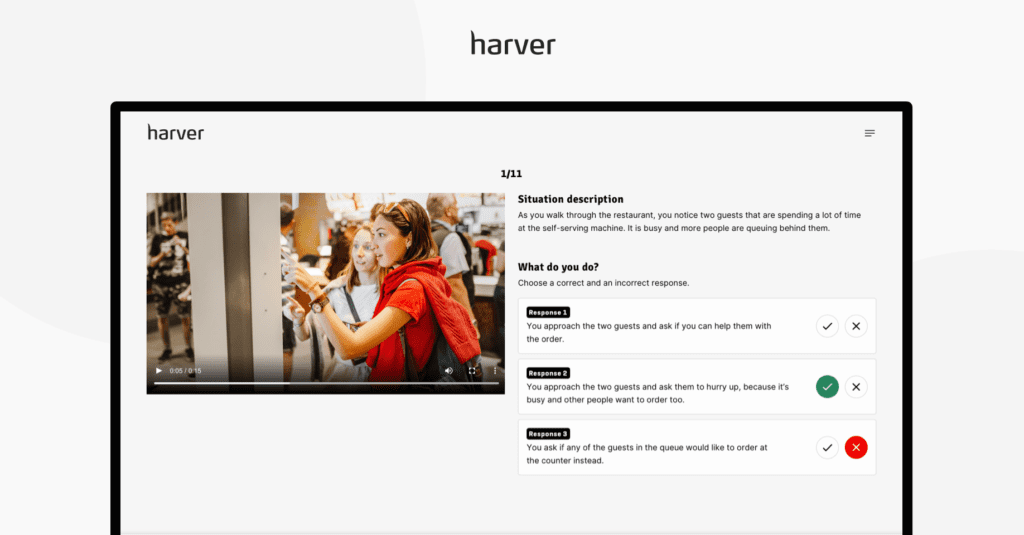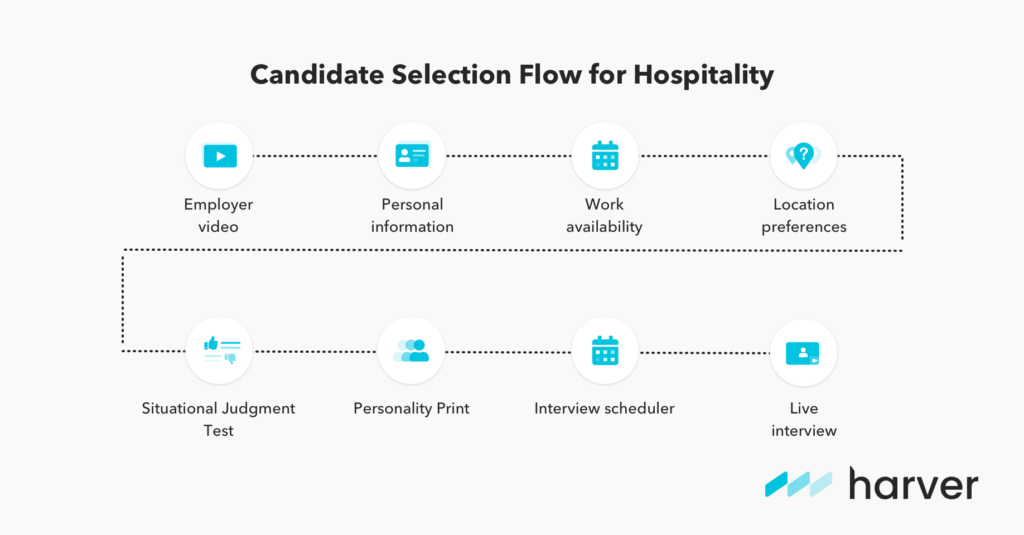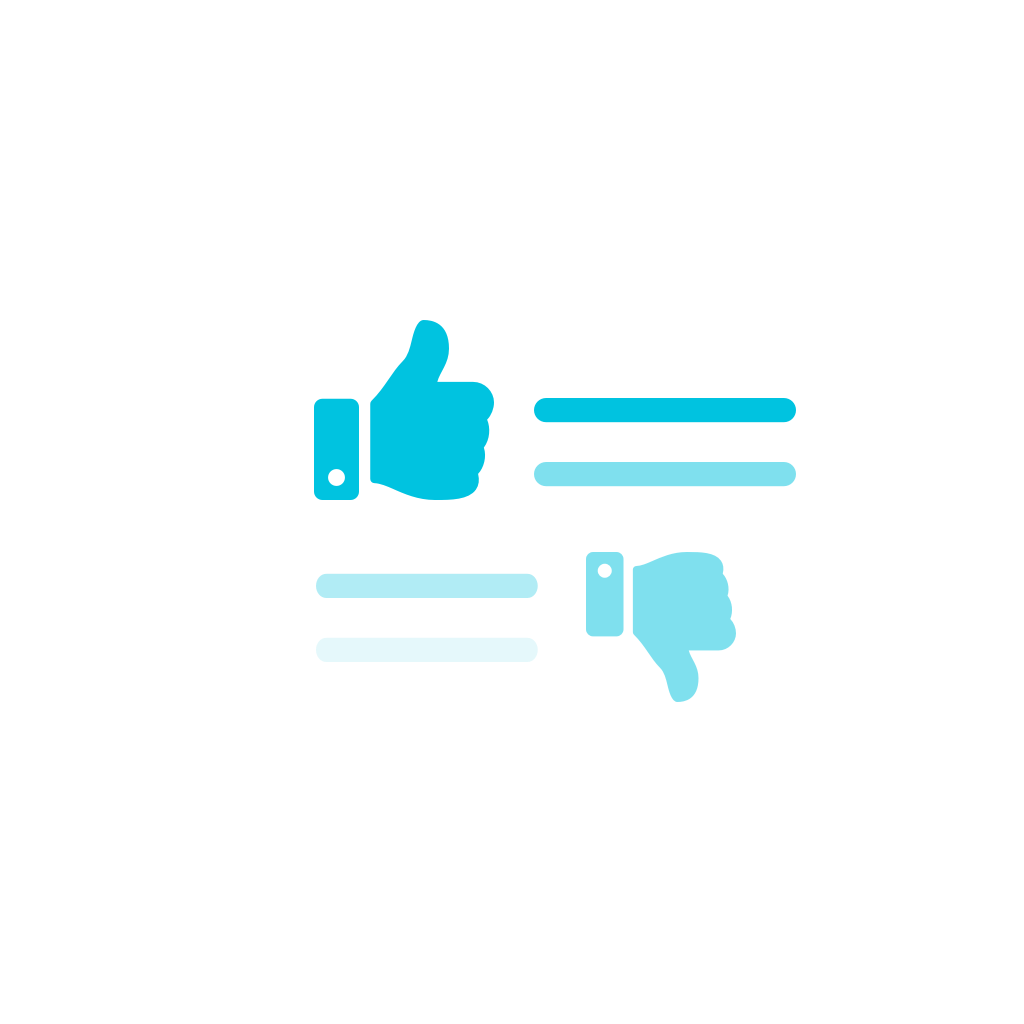Last year, we saw the ‘fight for $15’ movement drive the minimum wage up to $15 an hour for the first time. And for many fast-food restaurants who suddenly found themselves struggling to find workers, there’s also been a real temptation to over-simplify the application process just to get people through the door.
But using one-click apply, or resorting to CV-based applications to fill the open roles can complicate things even more in the long run.
When you’re recruiting large volumes of candidates for hourly roles like the ones in fast food chains, the best way to hire right-fit candidates is to focus your selection process on skills rather than past experience, and to use technology that automates the process and ensures a faster experience for both candidates and recruiters.
To do this, you just need to know:
- What skills to look for in fast food workers, to ensure you’re hiring people who stay in the job for longer
- What assessments to include in your application process so you’re assessing primarily for these skills
Once you have the answers to the above, you can build the perfect candidate selection flow that will focus on finding you the right people to fill your vacancies.
So let’s first take a look at the kind of skills that top-performing fast food workers possess.
What’s in?
Like what you see?
Don’t miss out. Subscribe to our quarterly digest to get the latest TA and TM resources delivered right to your inbox.
What skills should fast food workers have?
Whether you’re looking for frontline workers to serve customers, prepare food or operate cash registers, there are a few crossover skills that will be beneficial for any restaurant worker to have.
Here’s a few skills to look for in candidates, and why these skills are so important to have in the fast food industry.
- Communication skills – The ability to communicate clearly and confidently is at the core of all customer service roles. Working in a hospitality involves communicating constantly with members of the public, but also with team members too. This means good communication skills are crucial, including verbal, oral and written communication and practising active listening with customers too.
- Collaboration – The fast food industry relies very much on workers being able to work together effectively as a team. Production lines can be quite extensive, so working together with team members towards goals is really important – particularly in a fast-paced environment like quick-service restaurants.
- Social skills – Not only do you need sociable workers who enjoy working together in fast-food environments, but you also need people who have good social skills when it comes to communicating with customers. This includes having a polite and friendly manner and knowing how to respond to customer queries. Essentially, you want to hire people who enjoy social interaction.
- Adaptability/Flexibility – Most fast-food roles involve a bit of moving around in terms of daily tasks and responsibilities. One day, they might be operating a cash register and the next day, they could be preparing food in the kitchen. For this reason, you need to hire candidates who are comfortable with adapting quickly to change.
- Responsibility & Initiative – Looking for candidates who take responsibility and show initiative is good for any customer-facing role. Candidates with these skills are able to handle customer complaints easily and don’t rely on others to take the lead or to help them with tasks.
- Hospitality – A strong service ethic is always important in any restaurant job, and QSR roles are no different. You want to find workers who have a kind manner, show enthusiasm and take pride in welcoming customers to the restaurant.
- Customer-orientation – There’s a reason why fast food chains like McDonald’s are creating whole teams dedicated to customer experience right now. There was a time when staff training would focus on ensuring food was the right temperature, but we have machines to handle that now. The focus now is all about finding staff who know how to always put the customer first, as that’s what creates a positive experience and ensures customers keep coming back.
- Result-orientation – Hiring candidates who care about results means that they will always strive to uphold the restaurant’s high standards and care about doing a good job. Workers who don’t care about results can be dangerous for the restaurant’s reputation.
- White paper
Before you continue!
Don’t forget to grab your free copy of our white paper on the digital transformation of restaurant volume hiring. Learn about:
- The challenges currently shaping the restaurant recruitment space
- How restaurant employers can navigate the tight labor market, and the role of technology in a future-proof recruitment process
- The four building blocks of a fully digital recruitment process

How to assess for fast-food restaurant skills
Once you know what skills to look for in your ideal fast food workers, how do you find these skills amongst all your applicants?
There are two main assessments you’ll need when assessing for the skills mentioned above:
Situational judgement tests (SJTs)
Situational judgement tests are a great hands-on way of seeing how a candidate approaches different situations they might be faced with at work.
Applicants are presented with a series of scenarios that are specific to the role they’ve applied for and asked to select what the best and worst response would be in that scenario.

SJTs are an excellent way of predicting future behaviour of an applicant if they were hired, but they also help applicants decide if the role is really right for them too.
By giving applicants insight into the more challenging parts of the job as well as the easy parts, this gives them the opportunity to self-select out of the recruitment process if they don’t like what they see.
You can learn more about our SJTs below.
Personality questionnaires
Including a personality questionnaire in your application process will help you asses for all kinds of transferable skills that are notoriously hard to assess for as well as how the candidate approaches work.
They also give great insight into whether the candidate will be a right fit for your company culture and the likelihood that they will become a top performer.
Applicants are presented with a series of statements and asked to match each statement up with a phrase that, in their opinion, best finishes the statement. This assessment allows fast-food restaurants to match each candidate’s personality traits up with a role at their organization based on the answers they choose.
You can learn more about Harver’s personality questionnaires below.
The combination of SJTs and personality questionnaire has proven effective at assessing for the skills needed in fast-food workers, and limiting your selection flow to these two types of assessments keeps your application process relatively short, reducing unnecessary drop-offs.
Moreover, when the skills and characteristics of top performers are identified correctly, and the questions are tailor-made, the quality of hire goes up and the attrition rate decreases in time, because you’re hiring candidates who fit your specific needs.
One of our customers, for example, decreased their employee turnover by 38% by redesigning their candidate experience and replacing their one-way selection methods with Harver’s two-way matching technology.
At the same time, the number of rejected candidates decreased by 50% – a sign that the selection flow for this customer is properly built to help them filter out applicants who wouldn’t be a good fit, and who self-select out of the process.
Thus, the key is to make sure you’re tailoring these assessments and application flows so you’re measuring for the exact skills you need in the roles you’re hiring for.
At Harver, we use matching technology to first identify candidates’ skills and characteristics and then determine if they’re a good fit for your specific roles. If a candidate isn’t right for the role you’re hiring for, the technology will also indicate which types of roles they would be a good fit for in case you have opportunities where the candidate could be better placed.
Here’s what the candidate experience with these types of assessments looks like for Harver customers.
How to design the candidate selection flow
In volume hiring, having a really short application process is only a good thing if it’s bringing you the right people – there’s no point in making a bad process faster.
So while you might think that the below flow could be too long in a tight labor market, it’s been tested and proven to help our restaurant and QSR customers hire high quality candidates who stay in the role for longer.
Your candidate selection flow for fast food workers could look like the following:
- Company/employer brand video – to stand out from your competitors, sell the company to the candidate and ensure you have culture fit.
- Candidate details, including work availability and location preferences.
- SJT – to assess for skills related to work behaviors.
- Personality questionnaire – to assess for skills that indicate a good personality fit.
- Interview scheduler – to enable candidates to self-schedule interviews which speeds up the process and gives candidates a sense of control.
- Live video interview – to allow hiring managers to get to know the highest scoring applicants and view their communication style and manner.

The order of these assessments isn’t fixed, but we’ve seen our customers experience a lot of success when using the sequence above. It’s proven to lead to healthy drop-off rates, ensuring that the candidates who reach the interview stage are actually a good fit.
As interviews are the only stage in the hiring process that will need manager input, it’s important that they don’t waste any time interviewing candidates who aren’t going to be a right all-round fit for their roles.
How to know if your selection flow is working
As with any good volume hiring process, the only way to know if your selection flow is doing its job is to have the right recruitment KPIs that relate directly to your assessments and compare results before and after implementing your new selection flow.
As with any industries hiring workers for hourly roles, the most important metrics to track in QSR recruitment are:
- Quality of hire
- Retention and attrition rates
- Time to hire
Keep in mind that employee retention in the hospitality industry struggles with the highest seasonally adjusted quit rate among industries. The more you can strengthen quality of hire during selection, the better you can retain top restaurant or accommodation staff.
Time to hire is not linked to the quality of candidates, but with restaurant recruitment being so competitive – it matters. Harver’s hiring solution for QSRs is so efficient that you can see candidates go from the apply stage to being hired in 24 hours.
Measuring your attrition rates before and after implementing your new selection flow will tell you if your assessments are pulling out the skills you need for that specific role.
Similarly, keeping tabs of quality of hire metrics for new hires during onboarding – as well as their job performance post-onboarding – will tell you if your selection flow is helping you hire the right people.
What next?
By arming yourself with a data-driven selection flow that’s designed with restaurant hourly workers in mind, you can leave the time-consuming screening process to the technology so your recruiters can focus on the human aspect of recruiting.
Harver’s volume hiring software is built to deliver a fast, fun, and engaging experience to both recruiters and candidates, so If you’re struggling to hire and retain quality fast food workers in the current QSR landscape, you can book a demo below.
Ready to transform your hiring process?






